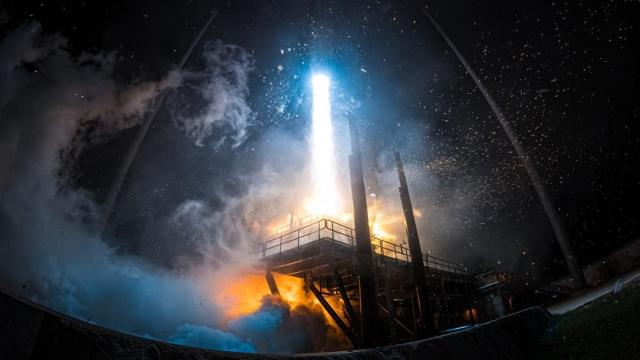After its rocket failed to reach orbit last month, California-based Relativity Space doesn’t want to dwell on the past. Instead, the company is leaping forward with its next launch vehicle, which promises to be bigger and better.
On Wednesday, Relativity Space announced its lessons learned from the launch of Terran-1, a 3D-printed, methane-fuelled rocket that was set to break records on its first flight. The rocket took off from Cape Canaveral Space Force Station on March 22 but an engine failure prevented it from reaching orbit.
Shortly after its stage separation, the rocket engine did not reach full thrust, according to Relativity Space. The company shared key findings from the rocket anomaly, detailing that the engine’s main valves opened slower than expected, preventing the propellant from reaching the thrust chamber in time.
Terran-1 is 85% 3D-printed by mass and it’s also powered by a liquid methane-oxygen propellant known as methalox. With its launch, Relativity Space was hoping to become the first private company to deliver its own rocket to orbit on its first flight (that distinction went to China’s Space Pioneer several weeks later with the inaugural launch of Tianlong-2), and Terran 1 would have become first methane-fuelled launch vehicle to enter Earth orbit. It did not, but Terran-1 did become the first 3D-printed rocket to reach space.
That was deemed good enough for Relativity Space, as the company is now focused on launching Terran-1’s successor.
“Our first chapter as a company was to prove to the world 3D printed rockets were viable. We just did that with Terran 1,” Tim Ellis, Relativity Space co-founder and CEO, said in a statement. “Our second chapter is to build the next great launch company with Terran R.”
Unlike its predecessor, Terran-R is designed to be a much larger 3D printed, medium-to-heavy lift orbital launch vehicle capable of carrying 33.5 metric tons to orbit. The rocket’s first stage will be outfitted with 13 3D-printed Aeon engines while its second stage will have a single methane-fuelled engine.
Terran-R’s design is focused on the reusability of its first stage rather than its second stage, made from printed aluminium that would allow up to 20 re-flights. The plan is land the rockets on drone ships stationed in the Atlantic Ocean, similar to how SpaceX lands its Falcon 9 first stage.
Relativity Space wants to start launching Terran-R in 2026 from Space Launch Complex 16, the company’s launch site at Cape Canaveral, Florida. Once it flies, Terran-R will begin servicing Relativity Space’s customer backlog of $US1.65 billion in launch service agreements, according to the company.
“Terran 1 was like a concept car, redefining the boundaries of what is possible by developing many valuable brand-new technologies well ahead of their time,” Ellis said.
It’s a bold move for Relativity Space to move onto the next project despite Terran-1 not fulfilling its inaugural mission. But in this, the new commercial space race, it’s important for companies to move quickly or risk being left behind.
